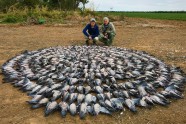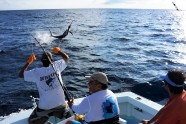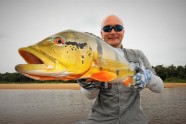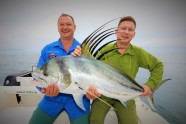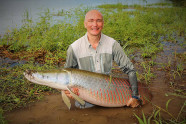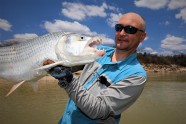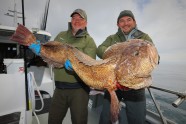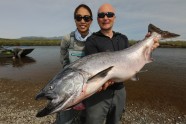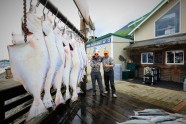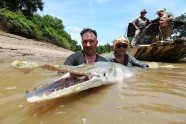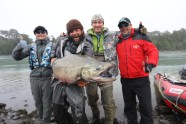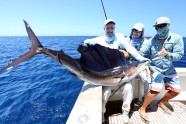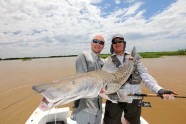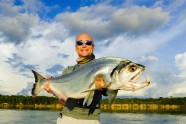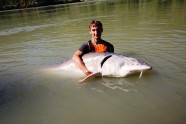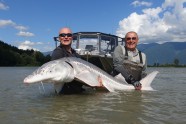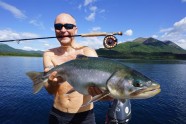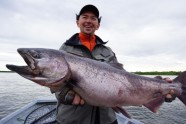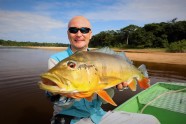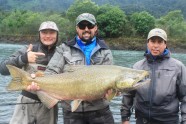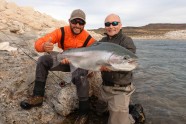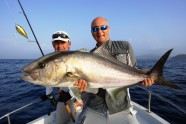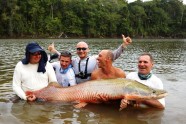OUR FISHING REPORTS WILL HELP YOU DECIDE ON YOUR NEXT TOUR
We create our fishing reports in order to show you the fish richness of the regions where we arrange our tours. It is quite a laborious process, but it is even more interesting because of that. A fishing report with the photos added to it creates a complete image of everything that was happening on the river or the sea, and it contains all the information about the region, the ways of fishing, and the species composition of the water inhabitants. In our articles we inform you about all our fishing techniques, tell you about the peculiarities of fishing in different parts of the globe. Our narratives are written so, that any visitor of our site can find something useful and informative here.
We are taking a lot of photos while fishing, as nothing compares with the demonstration of the trophy itself or the moment of struggle against it. By adding quite a large number of photos on the site, we help our clients have the best image of the region they are interested in, and thus, our fishing reports become harmonious and colorful.
A video report is also one of the best ways to present the fishing situation. We’ve been making videos while fishing for quite a long time already. To give maximum information to our clients many articles are supported by videos. We make amateur videos as well as programs/shows with the help of professional camera operators/cameramen and film editors. There exists a number of TV programs/shows which will tell you about the variety of fishing in the best countries of the world rich in their fishing traditions.
Unfortunately, we can’t post all our photos on the site as there are a lot of politicians and big businessmen among our clients and that’s why, not all our tours are mentioned on the site.
Exotic fishing with the best “Royal Safari” skippers.
Our fishing reports are presented below:
Our regular clients asked me to organize an interesting and unusual fishing and supplement it with hunting. When choosing a country for this trip, I’d been analyzing possible options and as these clients had been to different countries with us before and the dates of our trips had always been rigidly defined, I decided to go to Bolivia this time.
We would like to tell you about our fishing for Chinook in Chile in March 11-19, 2018. For the next season we have already booked the 2 peak weeks in the same lodge: March 10-18 and March 19-27. The groups will be created in the nearest future. Join us!
Our regular clients arrange friendly fishing competitions every year. They compete with each other. In 2018, on my recommendation, it was decided to hold a Sea Fishing Championship in Costa Rica. МThe event turned out to be so interesting and productive that we had a desire to organize a larger championship for all our clients who would like to compete in fishing for marlins, sailfish and other ocean predators next year.
The river we were fishing in is extremely hard-to-reach for other anglers as it is remote from civilization and there is a large number of shallows which are impossible to pass on low water for any vessel suitable for a group of anglers. A flight by a private plane and a three-hour trip by boat equipped with a 300-horsepower outboard motor (with the average speed of 70km per hour) allowed us to get to the places where time stopped, and where we could not find a single settlement for many kilometers around.
We were fishing in a lodge located on a small island in the Coiba Island neighborhood on the west coast of Panama. At present, Coiba Marine Reserve with the total area of 270 125 hectares is the third largest marine reserve in the world, after a large coral reef in Australia and the Galapagos Islands. The Park is comprised of Coiba Island, 38 small islands and the surrounding waters in the Gulf of Chiriqui. Judging by our own experience, fishing in these places is extraordinary diverse because of the variety of species and fishing spots.
A group of our regular clients from Ukhta (Russia) had been to Brazil a few times before, they had been fishing for various fish species including the peacock bass and payara here. But this time, the guys asked us to arrange a special fishing for arapaima to enrich their collections by this unique trophy. For this tour I had chosen one of the few places on the planet where we could efficiently fish in the wild nature of Amazonia living quite comfortably. As a result, we had a total of 15 arapaima after 4 ½ days of fishing.
For 2 days a comfortable boat became our home and we went to the farthest points located about 100 miles away from the shore. Our farthest points are the tops of seamounts where we have special attractors which are some kind of shelters for small tuna. Such a fodder base created due to the abundance of tuna retains pelagic predators, marlins and sharks, in particular. We had a total of 12 marlins, 10 sharks, and 1 dorado.
Fishing for the tigerfish in the Selous Reserve, the largest protected faunal reserve in Africa, is a unique experience in itself. While being in Selous we met no people, the only exception was the staff of our camp. We managed to combine fishing with recreation in Zanzibar and the acquaintance with the wild nature of Tanzania. This tour can’t be compared to any standard tourist program, and as far as the level of comfort is concerned, this tour is quite suitable even for children. We were able to find locations free not only from malaria, but mosquitoes in general!
Following up on my recommendation, a group of enthusiastic anglers visited Alaska to fish in various rivers and the ocean. After the meeting in Anchorage we went by a private plane to a comfortable lodge where everything was perfect: the location, the guides, the rich fleet of boats and planes, the excellent accommodation, and the perfect cook which is the rarest thing of all. The most prestigious trophy in the fresh waters of Alaska is the Chinook salmon or “king salmon” as the locals call it. To catch this prestigious trophy for a spinning rod is not difficult at all here, and all the adherents of this technique showed excellent results.
Here is the follow-up report on Alaska fishing taken place in June, 2017. After a successful sea fishing we went for the Chinook salmon to the west of Alaska. The sunny weather and positive attitude of all the members of our team created a good mood which accompanied us throughout the whole trip. There were 8 anglers and 2 guides in our team, and each of us wanted to realize his highest fishing expectations during this trip, and first of all, for the Chinook salmon. We chose the beginning of the season for the tour, as it is the optimum period to catch really trophy fish.
Here is the continuation of the story about a combined fishing taken place in June, 2017. After the fishing for prehistoric alligator-pikes in Texas, our team went to the Pacific Coast of Alaska to catch the predators inhabiting the cold waters of the southern part of Alaska. We were impressed by the diversity of the coast – majestic mountains covered with the forest, rocks of different shapes, and glaciers glistering in the sun. Huge blocks of ice were breaking away from them and falling into the ocean. Few years ago the International Game Fishing Association (IGFA) gave me an opportunity to meet two skippers obsessed with outstanding trophies, participation in championships, and setting world records like me.
Here is our report on the unique fishing for prehistoric fish which can reach an incredible size. Before going fishing to Alaska, a friendly company of 4 experienced anglers decided to follow our advice and go fishing for the alligator gar to Texas. The strikes did not keep us waiting! And in about two hours each of us got a nice trophy. Our anglers managed to adjust to this specific fishing immediately. The guys were waiting patiently for the ancient monster to swallow the bait properly in order to strike the fish for sure. The mouth of this unique fish is arranged so that, while the hook passes through, there is nothing for it to cling to, till it reaches the esophagus.
The population of the “king salmon” is not so numerous in Chile, comparing to Alaska, where our clients can observe the mass migration of the Chinook to spawn every year. The main peculiarity of fishing for Chinook in Chile is the longer freshwater migration route. In Alaska or Kamchatka the fish is migrating to spawn within 3-4 weeks with the peak of 10-14 days, whereas in Chilean Patagonia entering some rivers can continue up to 2.5-3 months. The concentration of the fish here is not so great.
Fly fishing for pelagic ocean predators is extremely hard and requires a highly coordinated action of the captain, the crew and the anglers. As soon as the captain sees a marlin, the sailors take teasers away, and an angler casts a fly as close as possible to the marlin or sailfish furious with the sudden disappearance of its potential prey. It is here that our clients set a world record for the number of marlins caught within 24 hours – we managed to catch 42 ones!
Due to the warm climate and extensive water area Esquina Corrientes is known as the territory of golden dorado. Despite the fact that it is the north of the country, most time of the season the climate here is tropical. The rivers covered with thick green thickets, warmed by the sun, and abounding in food create excellent conditions for the existence of this warm-loving fish. The largest specimen caught in the world weighed 31.4 kg while it was only 1 m long!
The payara is a real monster capable of breaking a powerful braided fishing line when it strikes, it can bite twenty-centimeter wobblers through, and can create a monstrous resistance, and by all means, it is worth catching at least once in a lifetime! Together with the fishing for payara in the lodge located far away from civilization, we made a fascinating cruise on a yacht on one of the largest and richest in interesting fishing places rivers in Brazil – the Rio Negro.
The sturgeon fishing in Russia is not so popular due to its complexity. There are few anglers who have ever caught sturgeons (especially large ones) in Russia. Oleg who had already had experience of fishing for sturgeons in the Volga River was quite skeptical about being aimed at a huge specimen. The guys came with their wives and children to combine the sturgeon fishing with family holidays and sightseeing of British Columbia.
After our excellent fishing in Alaska, Yakov, his son Yan, and I went to Canada to fish for the white sturgeon. Mikhail who had come from Israel just for the sake of this fishing joined us in Vancouver. 2 days of fishing passed very quickly, they were full of events, and we tried to make the most of every minute we had until our departure to Vancouver. 30 minutes before our departure, Yakov caught the largest specimen, and the fighting was going on for 45 minutes.
Here is the continuation of the report on our fishing for Chinook and other species taken place in July, 2016 in the southwestern part of Alaska. I discovered a completely different fishing. In such a river even a 1 kilo trout would have given a lot of emotions and the Chinook which had just entered the river from the sea made my heart beat faster. Following the silvery beast along the sloping grassy bank of the river, at the second attempt, I managed to lead it in into a scoop-net prepared by Matt at the right moment
2016 is the best of all the years I can recall for the number of Chinook entering the river to spawn. And the group of fishermen who came to Alaska in July is one of the best groups I have ever worked with. Every year I accompany several groups of anglers from Russia and other countries, and, as a rule, all of them are friends who have travelled a lot together. This time, the group was mixed. There were 8 anglers in the group: two fathers with their two sons, and two pairs of friends. All of them came from different places. There were people from Moscow, St. Petersburg, Kazakhstan, and the oldest and the most experienced member of the group came from Boston.
I would like not only to describe our fishing in Alaska in June, but also to analyze the results of Chinook fishing in 2016. The Chinook migration began 10 days earlier due to an abnormally early spring. The snow melted 2 weeks earlier! The climate change usually causes negative consequences, but it affected the Chinook migration in the most positive way. It’s unbelievable to come to the river that day when 20 000 Chinook have just entered it! It’s not so easy to describe it in words! It’s a unique experience! The fish strike any bait and often jump out of the water.
We released most fish, but at the same time, we did not miss the chance to degust various trophies which tasted delicious. One day, we went to a remote river, had a barbecue in the open air and then a siesta in hammocks. The trip was quite efficient, and not only because of the number of trophies caught, but also because of the opportunity to observe nature. In addition to the amazing scenery, the anglers on the first boat had a chance to see a jaguar hunt the Amazonian otters!
After our fishing on Jurassic Lake in Argentina we went to Chile. We were aimed at fishing for large Chinook. There were a lot of fish in the river and we could see this during the first hours of fishing. But despite the great number of coming outs to the water surface and jumps of specimens of various sizes, it was quite hard to make them bite. The first fish was caught two hours after the start of fishing.
In the morning we went by a small private plane to Lake Strobel or “Jurassic Lake” as it is often called. On the way we had a chance to enjoy truly cosmic landscapes of the south of Patagonia. It is here that the largest rainbow trout in the world can reach the incredible 12 kilos! The lake is densely populated with small crustaceans resembling shrimps and due to this the population of the rainbow trout is so great and rich in trophy specimens. We got settled in a comfortable lodge, had excellent Argentine meat for lunch and went fishing.
After our successful and diverse freshwater fishing in Guyana, Ivan (my regular client and I) went to Colombia to get marine trophies there. We visited Medellin on our way. The history of the city is closely connected with the wealthiest criminal in history, Pablo Escobar, and the cocaine trade in general. A taxi-driver brought us to a nice part of the city which was quite busy. It was late at night, but most bars, restaurants, cafes, and nightclubs were open. The atmosphere was relaxed and the young people were friendly and dressed very well.
Many of you have certainly heard something about arapaima and even thought about getting this incredible trophy. In my opinion, to catch arapaima or pirarucu, as it is often called in Brazil, in the wild nature is the greatest achievement for any angler living on the planet. In February, 2016 a group of anglers went to Guyana to catch this prehistoric monster and other exotic trophies.















